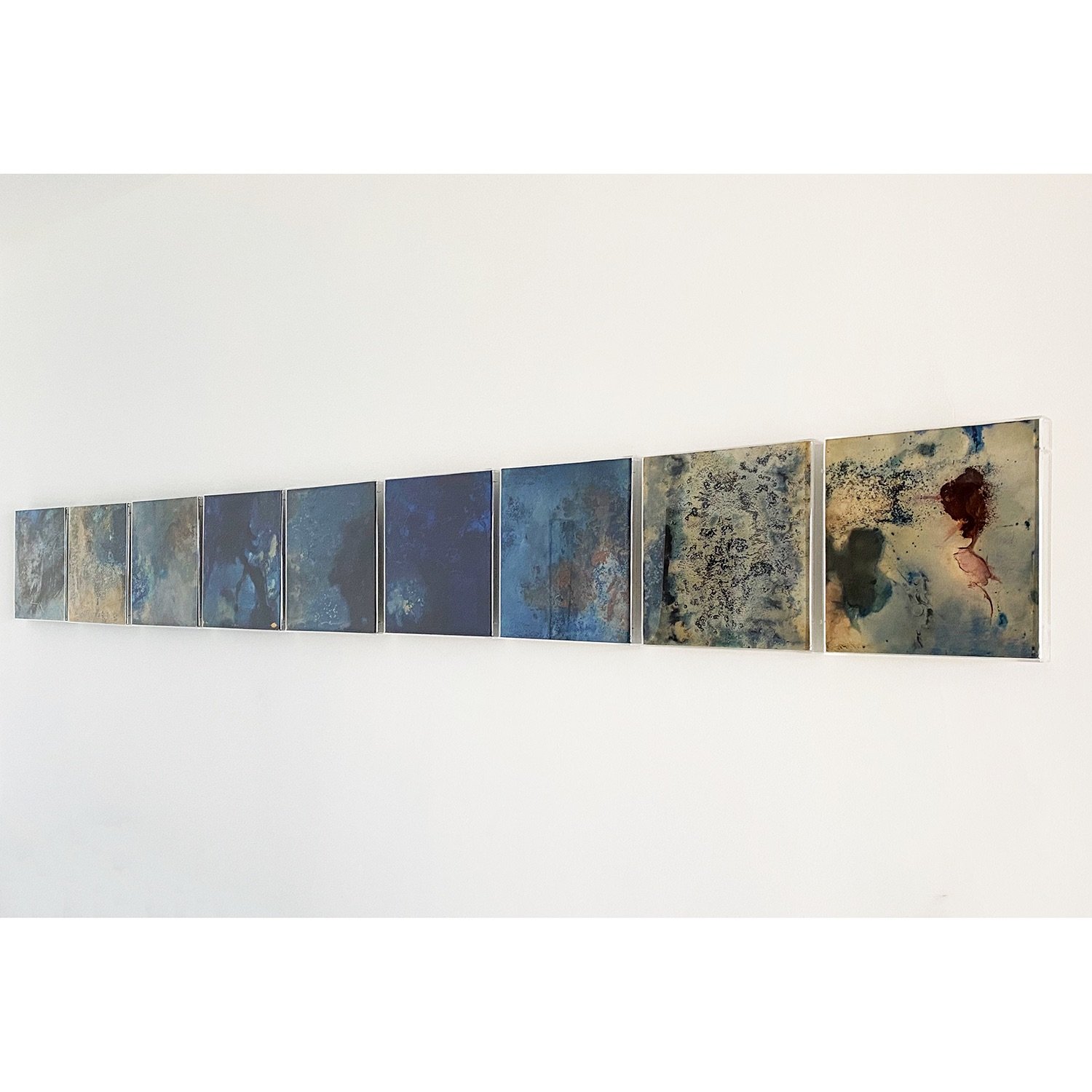
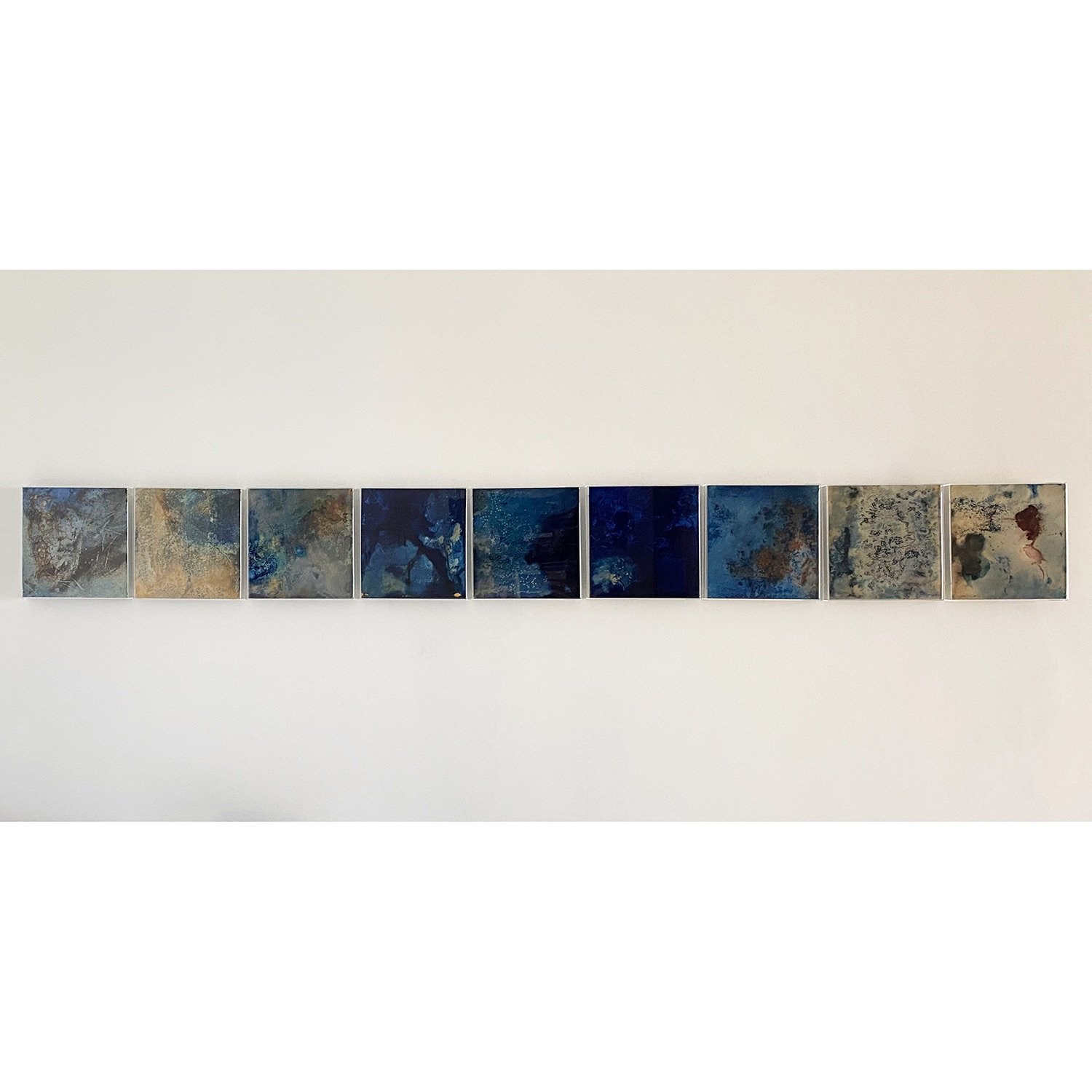

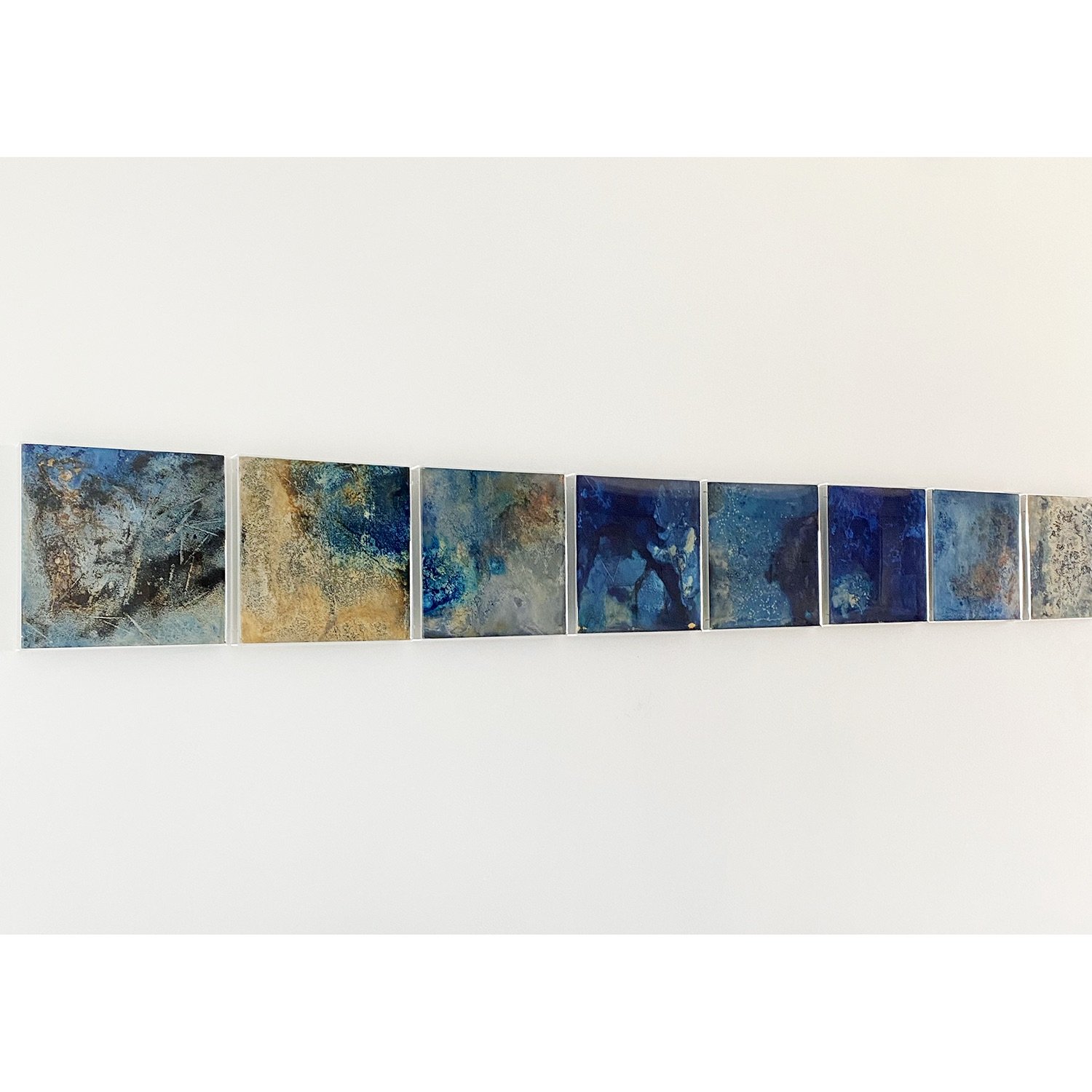
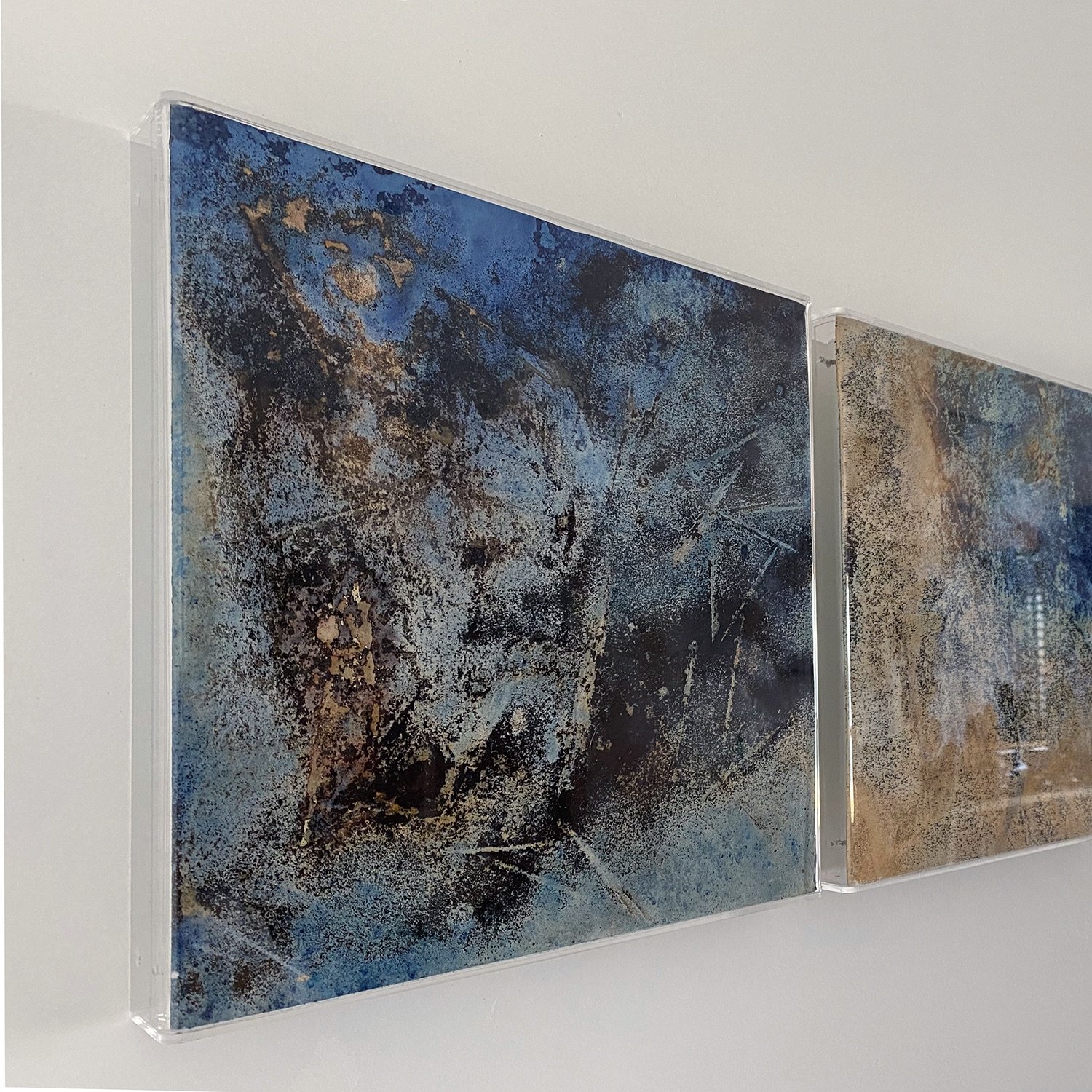
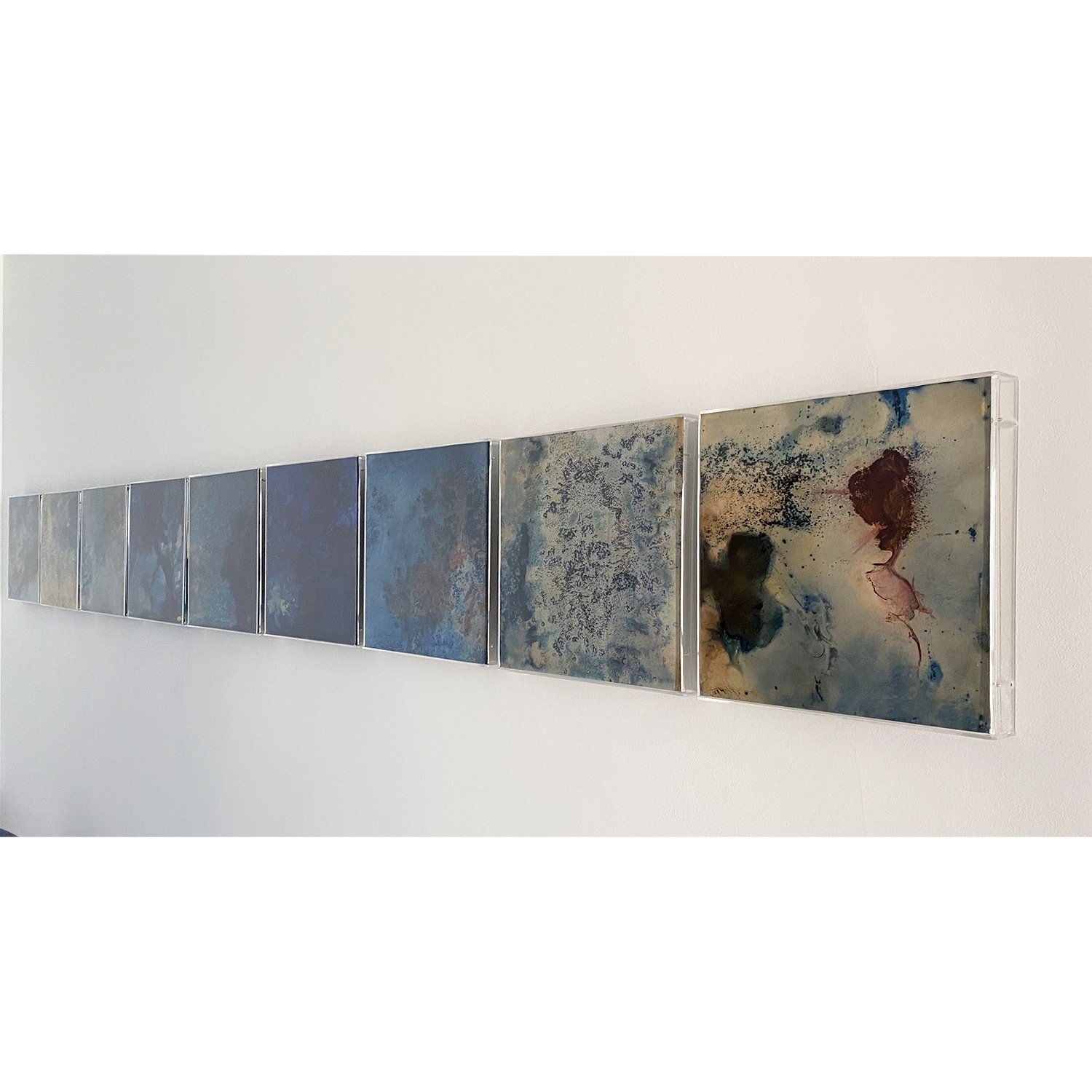
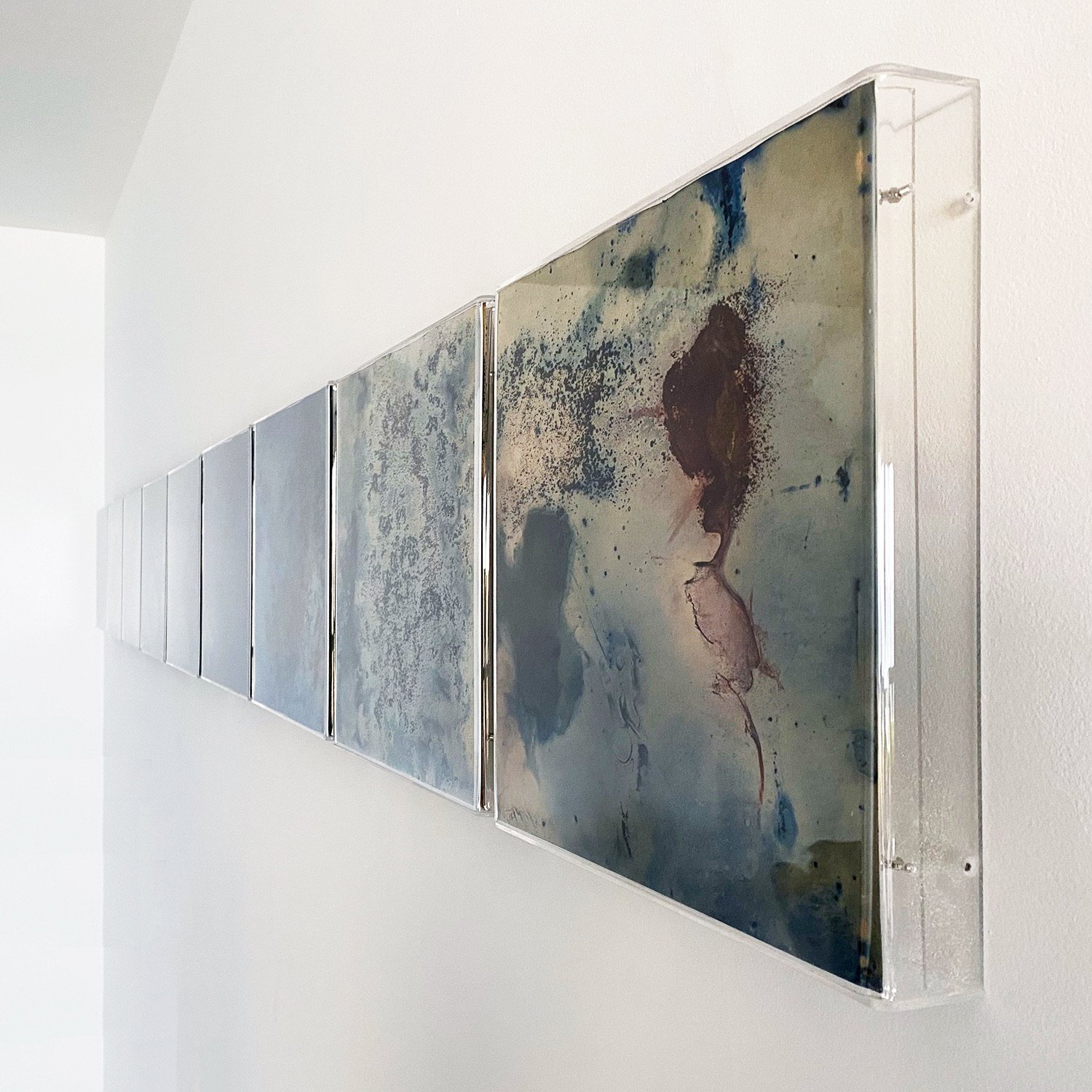

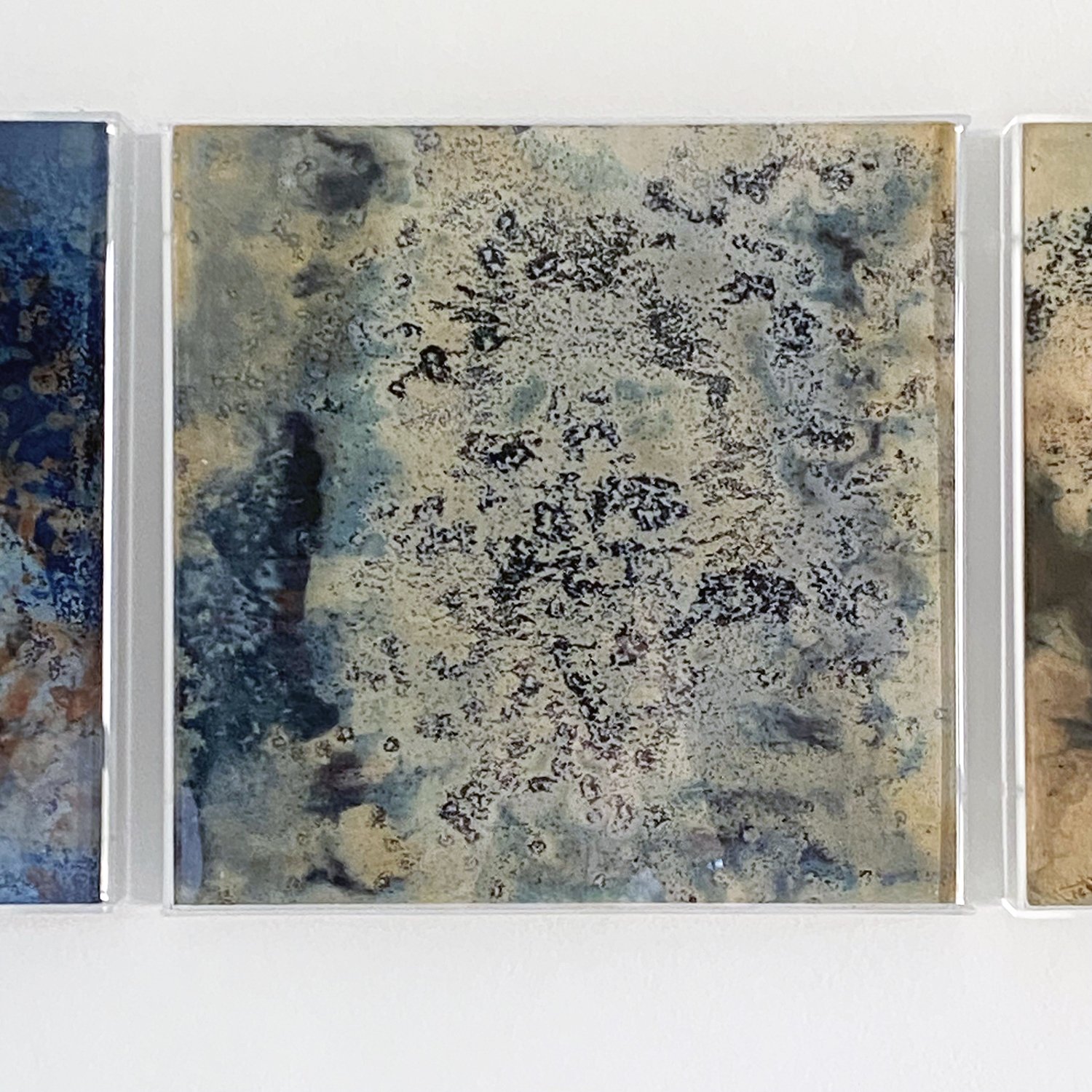

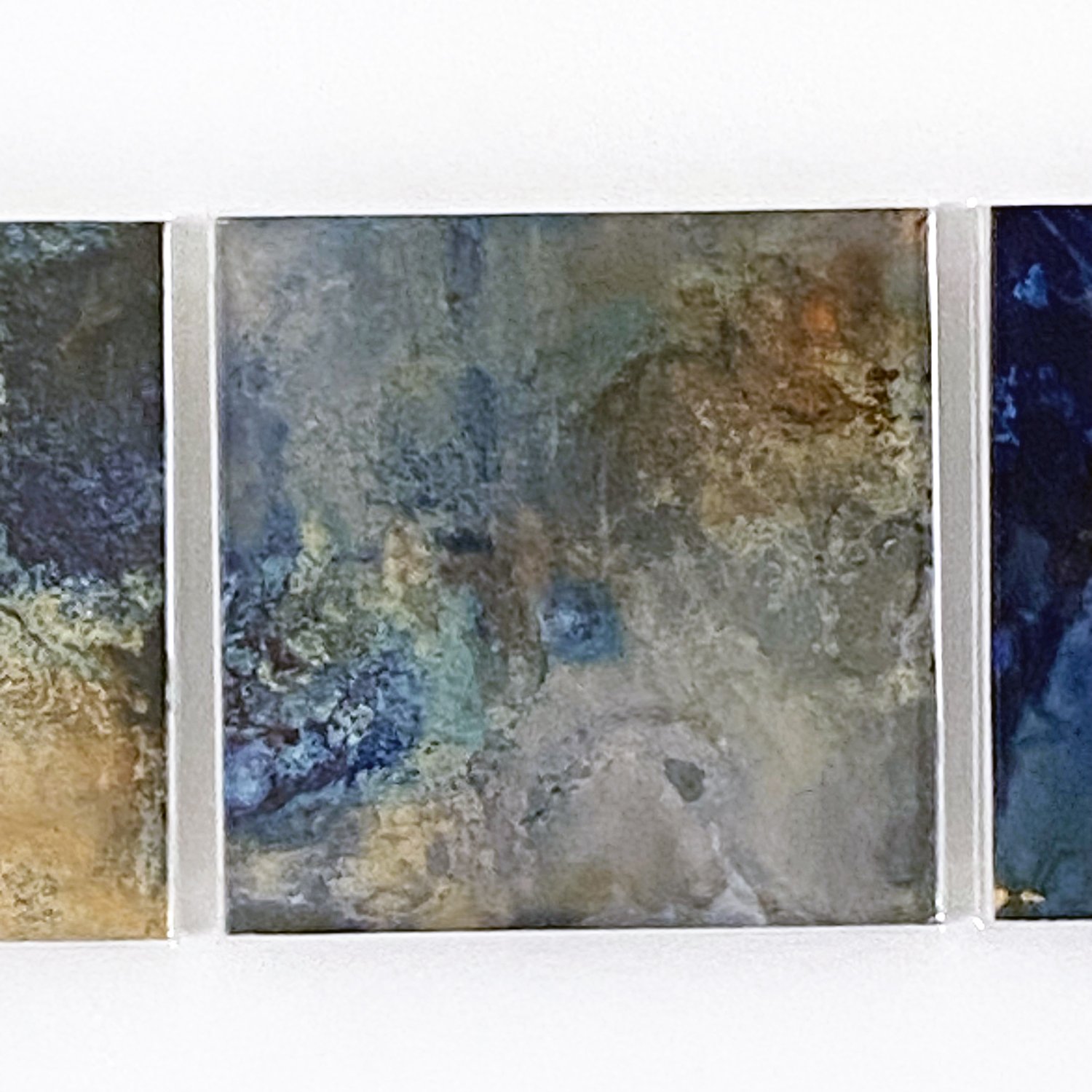
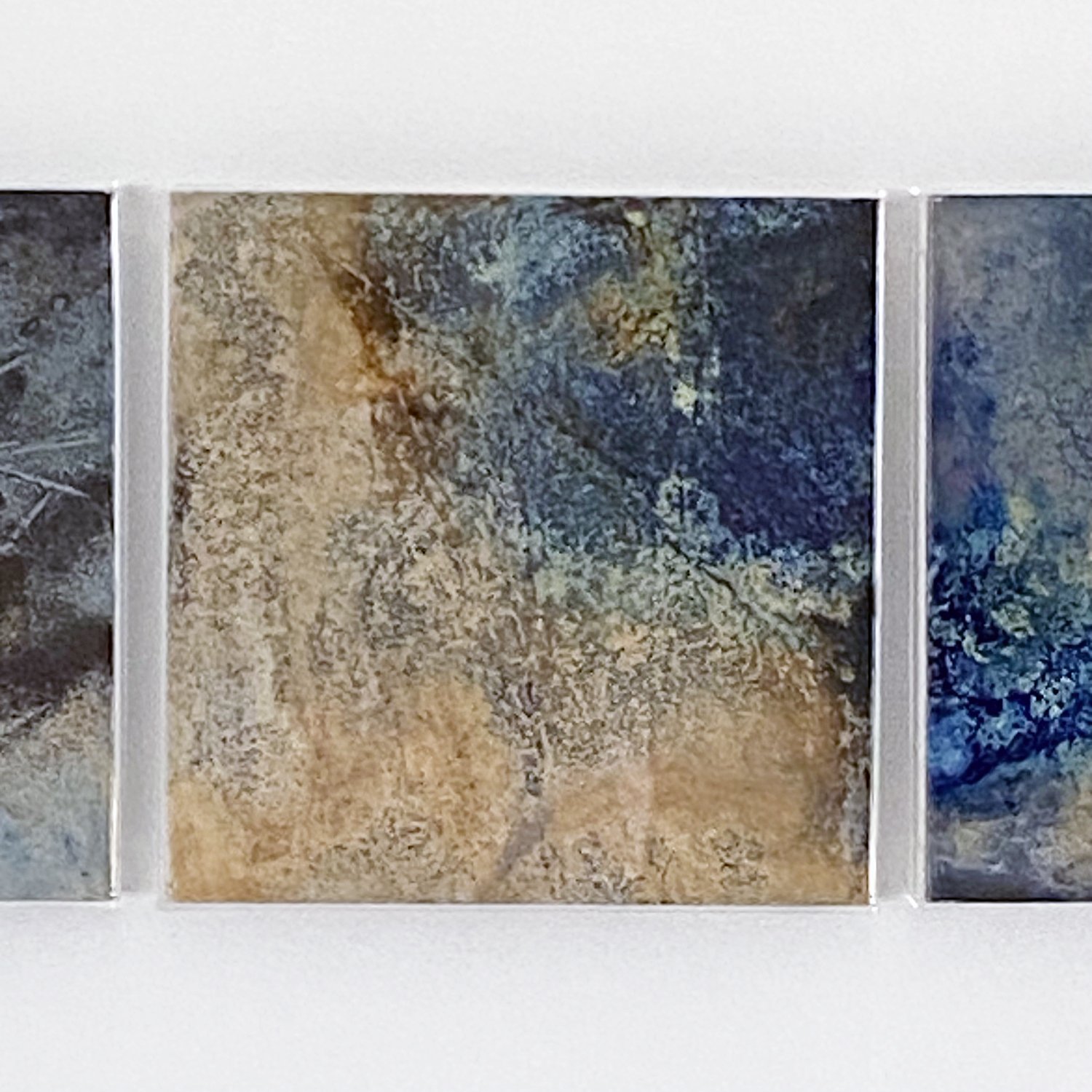

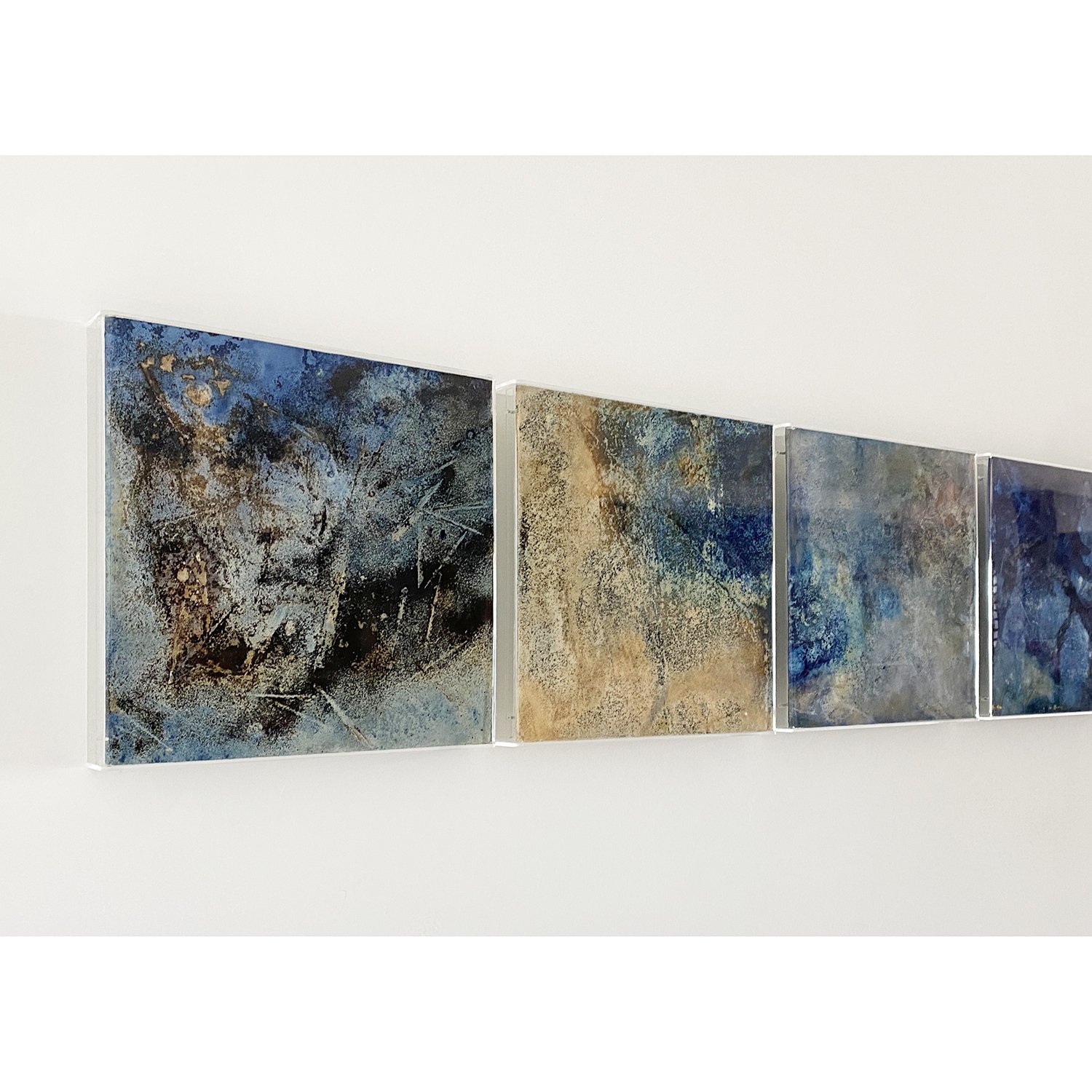

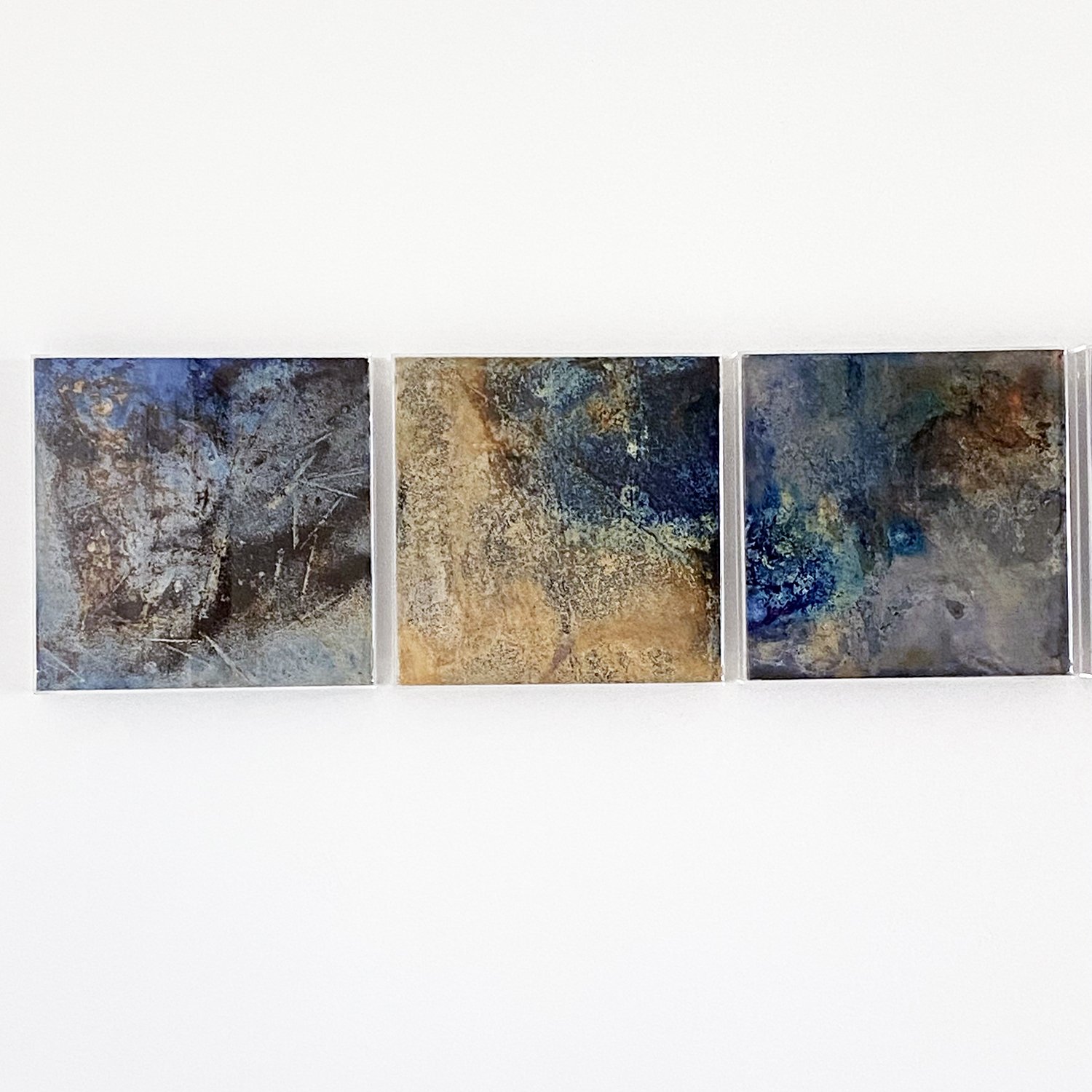
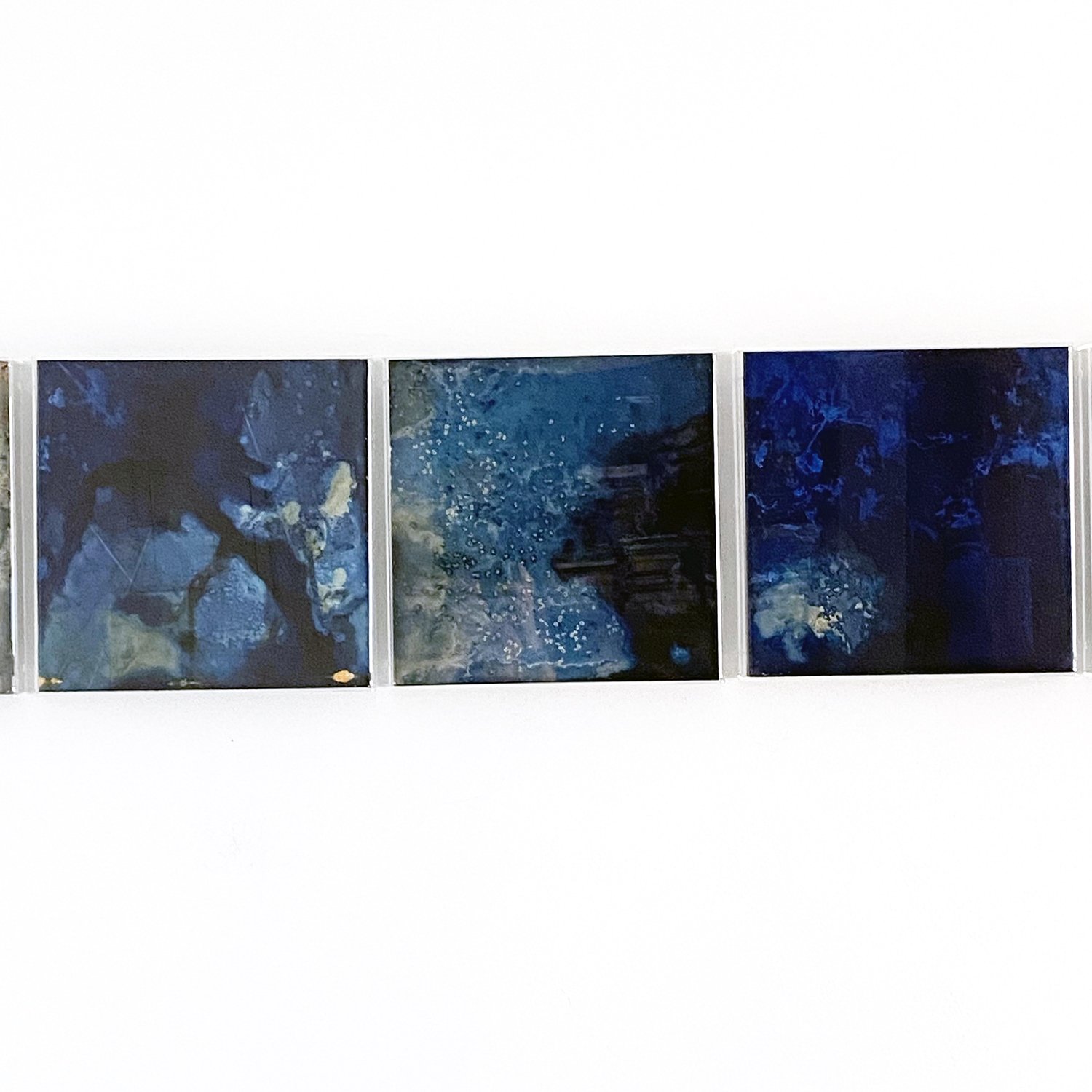











































































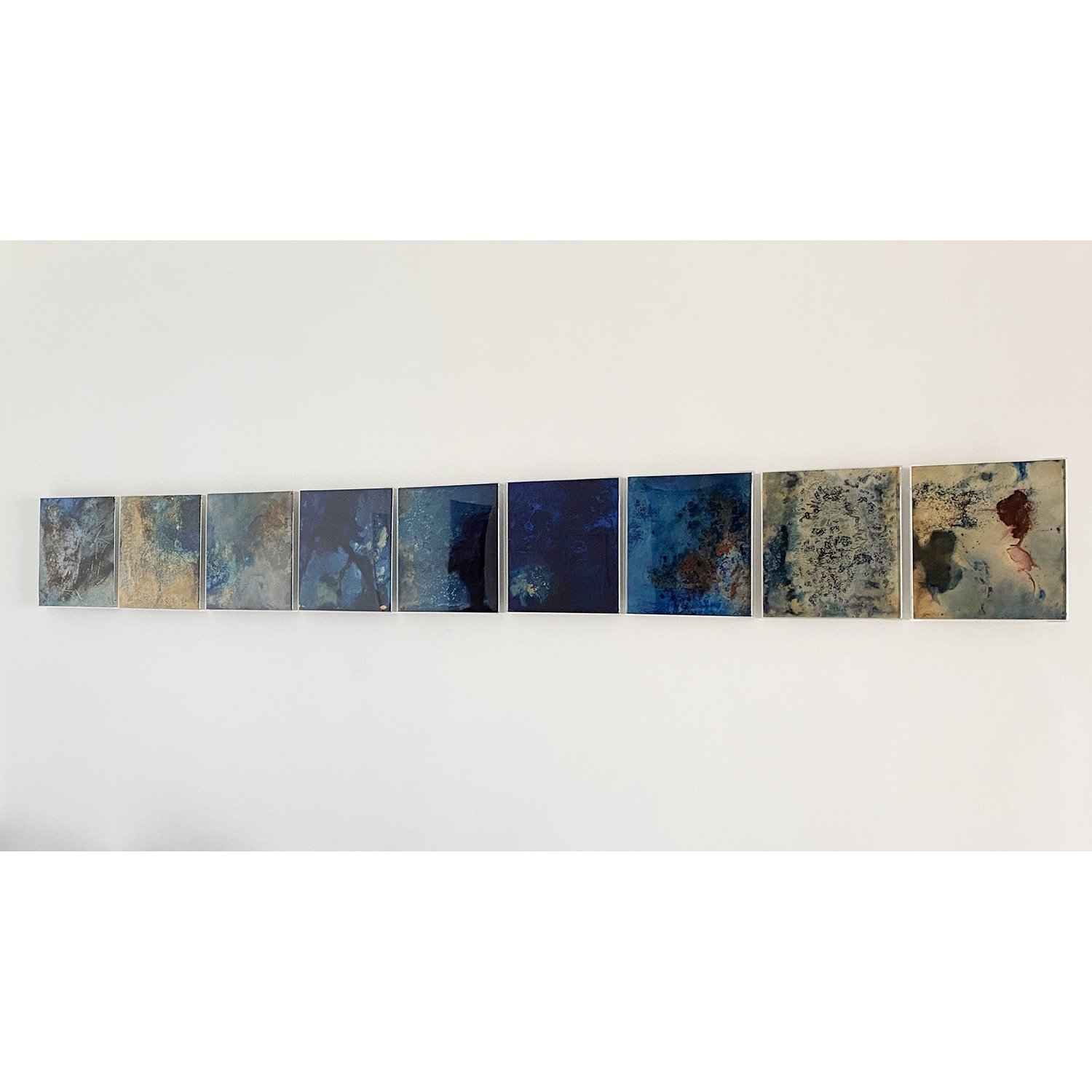
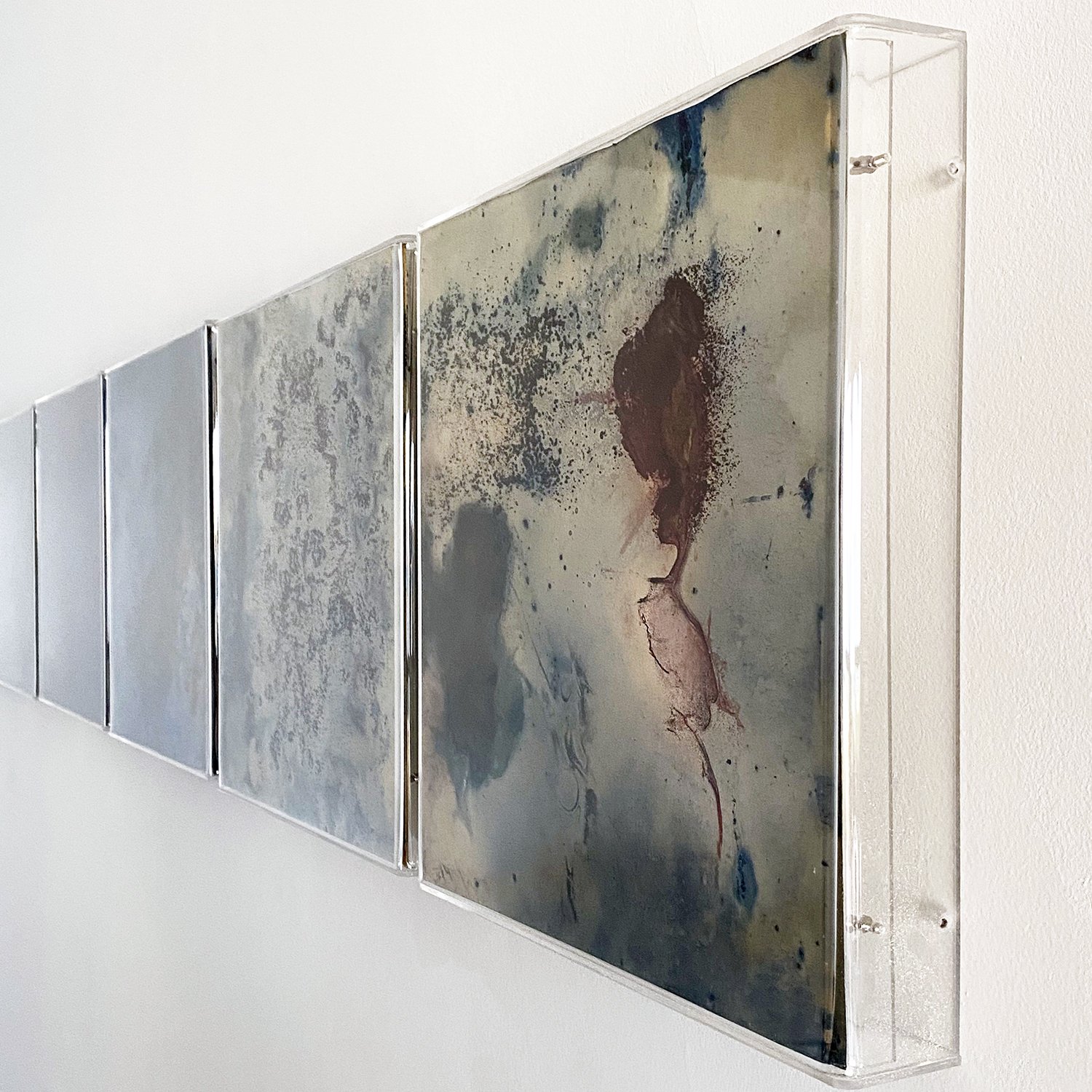

SOLARES (2019-2023)
[[Camera-less cyanotypes on paper///Cianótipos de contato em papel]]
30x30cm (12x12in) / 28x38cm (11x15in) [[or the reverse///ou o inverso]] / 65x50cm (25x20in)
[[I believe we photograph in an attempt to understand the impermanence of life, the transience of all things that cease to exist, despite our desire to retain them, to keep them. But not even the photographic image is permanent or eternal. Without light there would be no photography. Without light there would be no day. Technology gives us the eternal day and the illusion of infinite time, also the ability to photograph at any time.
How to be here now, pay attention to the moment? Since everything around us is constantly changing, perhaps producing impermanent images that suffer interference from light over time is a way of appreciating ephemerality. By exploring a 19th century technique today, I intend to create a historical reflection of the paths taken by photography as an art form from the industrial age to the post-digital world, thinking about the intrinsic reproducibility of the medium.
The images result from this series of unpredictability. And they will continue to change over time, as they have not been fully revealed and fixed. Ferric oxides will continue to react to the ambient UV light. The image is alive, it disappears/ reappears when exposed to daylight or kept at dark. The tones will change over time. A challenge for those who live in the era of controlling algorithms.
The only way to stop time and freeze a current color stage will be digitalizing the image. The photographed cyanotype will look increasingly different from the original artwork.///Acredito que fotografamos na tentativa de compreender a impermanência da vida, a transitoriedade de todas as coisas que deixam de existir, apesar do nosso desejo de retê-las, de mantê-las. Mas nem mesmo a imagem fotográfica é permanente ou eterna. Sem luz, não haveria fotografia. Sem luz, não haveria dia. A tecnologia nos dá o dia eterno e a ilusão do tempo infinito, também a capacidade de fotografar a qualquer momento.
Como estar aqui agora, prestar atenção no momento, uma vez que tudo ao nosso redor está mudando constantemente? Talvez produzir imagens impermanentes que sofrem interferência da luz com o passar do tempo seja uma forma de apreciar a efemeridade. Ao explorar hoje uma técnica do século XIX, pretendo fazer uma reflexão histórica sobre os caminhos percorridos pela fotografia como forma de arte que passa da era industrial ao mundo pós-digital, pensando na reprodutibilidade intrínseca do meio.
As imagens resultam dessa série de imprevisibilidades. E elas continuarão a mudar com o tempo, já que não foram completamente reveladas e fixadas. Os óxidos férricos continuarão a reagir à luz ultravioleta ambiente. A imagem está viva: desaparece quando exposta à luz do sol, reaparece quando mantida no escuro. Os tons mudarão com o tempo. Um desafio para quem vive na era dos algoritmos de controle.
A única maneira de parar o tempo e congelar um estágio atual será digitalizando a imagem. O cianótipo fotografado terá uma aparência cada vez mais distante da arte original. Não sei se isso importa.]]
Patricia Borges 2019